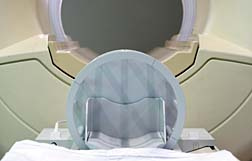 The treatment is known as Extracorporeal Photopheresis, and it is a form of dialysis in which the blood is treated with photoactive drugs. Those drugs are then activated when the blood is exposed to ultraviolet light. The blood, with the activated photoactive drugs, is reintroduced to the body, helping the immune system fight off the NSF.
The treatment is known as Extracorporeal Photopheresis, and it is a form of dialysis in which the blood is treated with photoactive drugs. Those drugs are then activated when the blood is exposed to ultraviolet light. The blood, with the activated photoactive drugs, is reintroduced to the body, helping the immune system fight off the NSF.NSF is a highly debilitating disease, in which collagen accumulates in the patient's tissue causing skin to harden and thicken. Joints can become immobile, with some patients eventually requiring wheelchairs because they are unable to walk. NSF can also cause disorders of the patient's organs, such as the liver, lungs and heart and can be fatal.
It is not known for sure what causes NSF although the disease has been linked to the use of gadolinium based contrast dyes in patients with renal failure. The theory is that a patient who has renal failure cannot expel the gadolinium, which is a highly toxic metal, from his body as quickly as necessary. Gadolinium is administered as a chelate, supposedly protecting patients from its toxicity; however, if the gadolinium stays in the body too long it could separate from the chelate, resulting in NSF.
READ MORE MRI LEGAL NEWS
Many patients who have had an MRI with a gadolinium based contrast dye are now wondering if they may have developed NSF. Although it occurs in patients with renal failure, it is possible that some patients had undiagnosed renal failure when their MRI occurred. Symptoms of NSF include burning, itching or swelling of the skin, tightening of the skin, a change in skin texture, stiffness in joints and trouble moving the limbs, muscle weakness and pain in the hip bones or ribs.
If you or someone you love has been harmed by the use of gadolinium-based contrast dye during an MRI, you may be eligible to join a lawsuit against the maker of the dye. Contact a lawyer to discuss your options.
